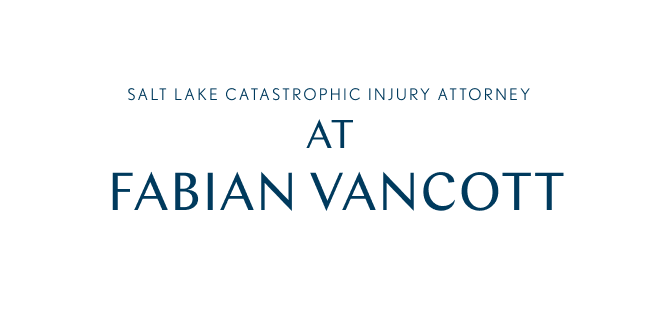Sec. 78B-2-114 allows a health care care provider to request a separate trial on issues involving the statute of limitations. One such trial starts this morning (Tuesday, November 27th) in Judge Barry Lawrence’s courtroom in Salt Lake City.
Jensen v. IHC, dba LDS Hospital, C/N 150900735, Third District Court for Salt Lake County, is an action alleging that Erik Jensen received surgical treatment for abdominal pain and cramping in March 2010, and then, a few days later, suffered a cardiac arrest. Mr. Jensen claims that there was both improper post-surgical care, and then negligent resuscitation efforts after the cardiac arrest. This, he claims, resulted in severe ischemia, brain damage, and permanent disability.
Plaintiff contacted an attorney in May 2010 to review and consider taking his case. That first attorney, after obtaining expert opinions, decided that he did not wish to pursue the case, and declined to do so. The attorney recommend that Jensen obtain a second opinion from another lawyer, which Jensen did. That second lawyer also found no evidence of negligence and declined the case as well.
Four years passed. Then, in early 2014, Jensen’s father happened to speak with Charlie Thronson, a medical malpractice attorney, and Thronson agreed to review the case. After obtaining the records and expert opinions, Thronson determined that there was plausible evidence of medical malpractice after all.
A notice of intent was served on March 21, 2014, a prelitigation decision was issued in December 2014, and this action was filed on February 2, 2015.
The relevant statute of limitations and repose for medical malpractice claims is Sec. 78B-3-404:
Statute of limitations—Exceptions—Application. (1) A malpractice action against a health care provider shall be commenced within two years after the plaintiff or patient discovers, or through the use of reasonable diligence should have discovered the injury, whichever first occurs, [the limitations period] but not to exceed four years after the date of the alleged act, omission, neglect, or occurrence [the repose period].
The defense first moved for summary judgment on the grounds that the claim was barred by the four-year statute of repose, as the complaint was not filed until February 2015, more than four years after the acts of alleged negligence. IHC took the position that the filing of a the request for prelitigation review did not “toll” the repose period, although it may have tolled the two-year limitations period running from the date of injury discovery. This position was rejected by both the district court and, on interlocutory appeal, by the Utah Supreme Court. See, Jensen v. Intermountain Healthcare, 2018 UT 27, 424 P.3d 885.
That left only the two-year limitations period as an affirmative defense for trial. On remand from the Supreme Court, the defense moved to bifurcate the trial and have the limitations issue decided first. Jensen opposed that bifurcation motion by moving for summary judgment on the limitations issue– asking the court to decide as a matter of law that he served his notice of intent within two years of discovering his legal injury; that is, not until Mr. Thronson finally obtained confirming expert opinions.
The trial court denied plaintiff’s motion for summary judgment and granted the motion to bifurcate. So the gist of the trial will be whether plaintiff’s investigation in hiring two attorneys to review whether he had a malpractice case establishes “discovery of injury.” IHC’s position is that this is at least inquiry knowledge, and that it legally does not take an opinion from an expert witness to finally establish “discovery.” Plaintiff’s position is that having been told by two sets of attorneys that there was no negligence made it impossible for him to “discover” his injury until confirming expert opinions were received in early 2014. Judge Lawrence’s opinion denying the MPSJ well sets forth the range of appellate opinions we have on what is necessary to prove “discovery.”
I expect this trial will last three days. Of great interest will be the instructions given to the jury on discovery of injury, and whether MUJI CV325 will in any way be altered or supplemented:
CV325 Timely filing claim. “Discovery of injury” defined. {Name of plaintiff] must file a medical malpractice claim within two years from the date [he] discovered the injury or the claim is barred. You must decide the date by which [name of plaintiff] should have discovered the injury.
“Discovery” of an injury from medical malpractice occurs when a patient knows or through reasonable diligence should know each of the following: (1) that [he] sustained an injury; (2) the cause of the injury; and (3) the possibility of a health care provider’s fault in causing the injury.
Whatever the outcome of the trial, we can surely expect an appeal seeking further clarification on what, exactly, constitutes “discovery” for purposes of the medical malpractice statute of limitations.
Plaintiff’s counsel: Charles Thronson and Nicholas Bernard, of Parsons Behle & Latimer.
Defense counsel: Brinton Burbidge, Paul Van Komen, and Nate Burbidge, of Burbidge & White.


